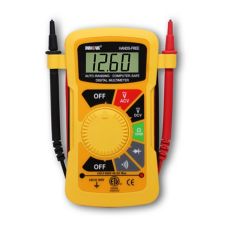I would be surprised if that starter clutch made a difference as long as yours is not slipping, and I think you would feel or hear that. That starter clutch is a mechanism that engages and allows the starter to rotate the crank and when the engine starts and turns faster it free wheels and allows the crank to spin without spinning the reduction gears that connect the starter drive to the crank gear. It is also called a one way clutch.
So why does it eventually start? What changed with all the cranking? It probably does not increase in cranking speed, air intake doesn't change, fuel delivery could change, timing stays the same, we create some heat with cranking so that could help. For good starting we need fuel, air, a spark and compression. Which of those is most impacted by cranking? Have you checked the plug to see if it is getting fuel after a few revolutions? Should be able to smell or see fuel on plug. I'm assuming you have changed the plug. If it is getting air, fuel and assume timing is not changing, that leaves compression. I think all the cranking could raise compression and help the starting especially if It had low compression/excessive blowby to begin with. You did not mention but, I bet it starts ok if only shut down for a few minutes. If initially it does not have adequate compression, cranking will raise compression by warming the piston and cylinder slightly, and more likely cranking distributes a bit of oil around in the engine and some off that oil makes it to the cylinder wall and assists in sealing a worn/leaking cylinder raising compression to the point it starts. So a compression or leak down test might show low compression. It would be interesting to squirt a bit of oil in the cylinder, kick or spin engine a few times, plug back in and see if starting improves. That oil will raise compression if piston, rings or cylinder are worn.
Valve adjustment affects starting also, but I assume you have checked those. I believe that engine utilizes a decompression mechanism in the camshaft that holds the exhaust valve slightly off the seat up to a certain rpm. I believe it is designed to relieve a little compression during kick starting. If the starter wasn't cranking at high enough rpm, poor battery, heavy oil, cold, that decompressor could impact compression. If yours is a no kick start engine it may not have that decompressor.
Another thought, the ecu, fuel injection and ignition works best with adequate stable voltage. If you have a marginal battery and high current draw starter the battery voltage can drop enough to effect those electronics. But, I wouldn't think the extra cranking would increase voltage and improve starting, so doesn't fit the symptoms. But, With a volt meter on the battery and the engine cranking, battery voltage should not drop below around 10.5 volts. Higher is better. Good luck.



